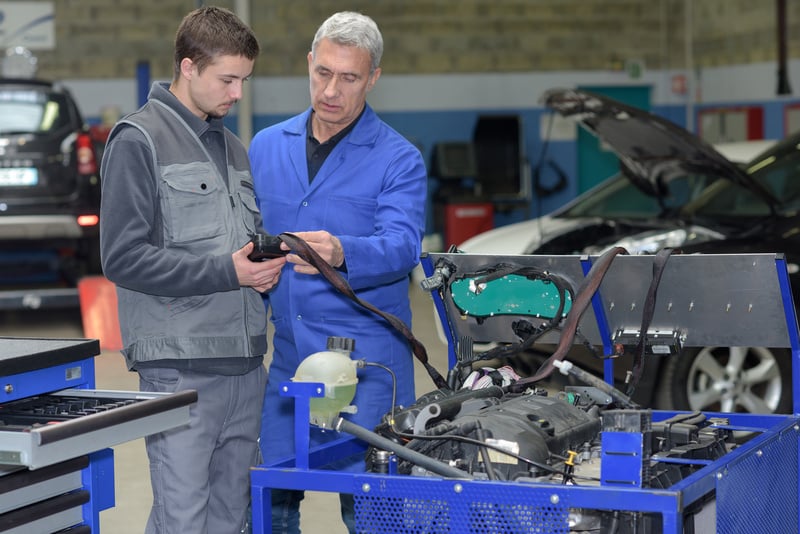Building Strong Community Partnerships
Collaborating with Employers, Industry Associations, and Other Stakeholders
Remember that old saying, "It takes a village"? When it comes to building a robust, future-ready workforce, it absolutely takes a community. No single entity—not a community college, not a business, nor an industry association—can solve the complex challenges of workforce development alone. The most successful strategies emerge from strong, collaborative partnerships that weave together the unique strengths of various stakeholders. For manufacturers seeking skilled talent and for communities striving for economic vitality, fostering these connections isn't just beneficial; it's essential.
The Power of Collective Impact in Workforce Development
Workforce development isn't just about training individuals; it's about creating an ecosystem where talent can thrive, businesses can grow, and communities can prosper. This vision becomes a reality when diverse groups actively work together. When community colleges, local businesses, industry associations, economic development agencies, and even K-12 schools come together, they can identify critical skill gaps, design relevant training programs, and create clear pathways from education to employment. This collective impact ensures that training efforts are aligned with real industry needs, avoiding programs that produce graduates for jobs that don't exist.
Key Players in a Thriving Workforce Ecosystem
Successful regional workforce development plans are built on the active participation of several key players:
-
Employers: Businesses are at the forefront, articulating their current and future talent needs. Their insights into specific skills, technologies, and workplace expectations are invaluable for designing effective curricula. They also provide critical on-the-job training opportunities, apprenticeships, and potential employment pathways.
-
Community Colleges: These institutions are often the backbone of local workforce development. They provide accessible, affordable education and training, adapting their programs to meet industry demands. Their facilities, instructors, and established educational frameworks are vital assets.
-
Industry Associations: These organizations represent the collective voice of a sector. They can identify broader industry trends, advocate for supportive policies, and help disseminate best practices. Their influence can bring multiple employers to the table, creating standardized training needs and solutions across an industry.
-
Government Agencies & Economic Development Groups: Local, state, and federal agencies often provide funding, grants, and policy support for workforce initiatives. Economic development groups connect businesses with resources and help align workforce efforts with broader economic growth strategies.
-
K-12 Education: Engaging early is crucial. Collaborating with high schools and vocational programs helps build awareness of career opportunities in various industries and encourages students to pursue relevant educational pathways.
Fostering Industry-Education Partnerships for Mutual Benefit
The most impactful collaborations move beyond one-off meetings to fostering genuine industry-education partnerships. This involves:
-
Regular Communication: Establishing consistent channels for dialogue between educators and industry leaders to discuss curriculum, technology trends, and hiring needs. This ensures programs remain relevant.
-
Shared Resources: Leveraging the strengths of each partner. A community college might have state-of-the-art labs, while a local manufacturer offers specialized equipment or expert mentors for apprenticeships.
-
Curriculum Development: Directly involving employers and industry experts in shaping course content to ensure it aligns with the skills most in demand. This makes graduates truly job-ready.
-
Work-Based Learning Opportunities: Creating robust internship, externship, co-op, and apprenticeship programs that provide students with invaluable practical experience.
-
Faculty Development: Giving educators opportunities to visit workplaces and understand current industry practices, ensuring their teaching remains current and informed.
These partnerships help leverage community resources for workforce development effectively, preventing duplication of effort and maximizing impact.
Building a Skilled Future Together
Creating a resilient workforce isn't a task to be tackled in isolation. It's a collaborative journey that strengthens local economies, empowers individuals, and ensures businesses have the talent they need to innovate and grow. By actively engaging with employers, industry associations, and other stakeholders, communities can build dynamic ecosystems that adapt to change and consistently deliver skilled workers.
Ready to strengthen your community partnerships and ensure your workforce development initiatives are truly impactful? Contact Adaptive Training Services today to discuss how our customized training solutions can be a vital component of your collaborative strategy, equipping your workforce with the skills needed for success.

 By
By


